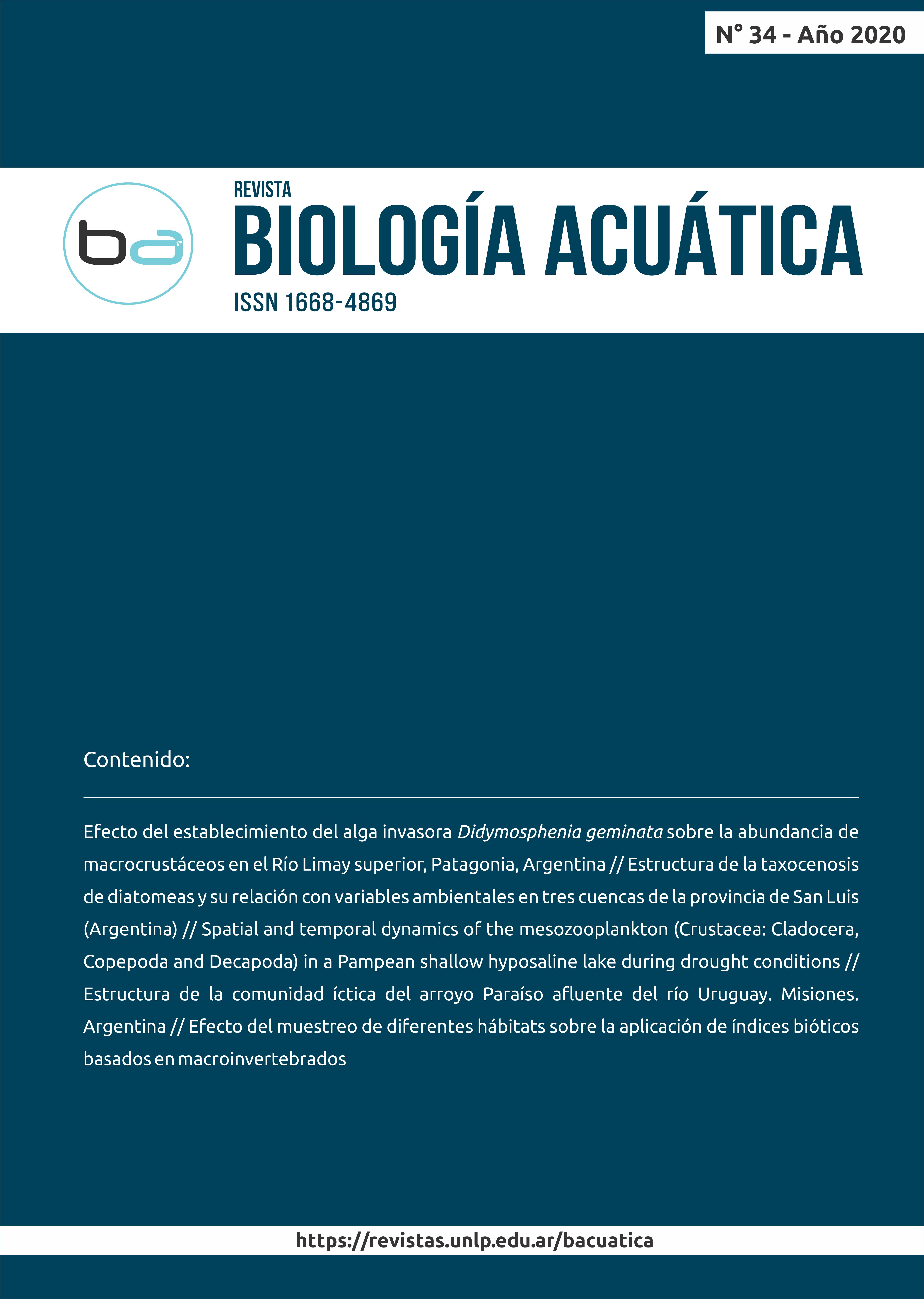Efecto del muestreo de diferentes hábitats sobre la aplicación de índices bióticos basados en macroinvertebrados
DOI:
https://doi.org/10.24215/16684869e010Keywords:
Biomonitoring, Salí-Dulce basin, water qualityAbstract
The aim of this study was to evaluate the effect of habitat on the application of biotic indices (BI) based on benthic macroinvertebrates. Two different habitats were sampled, (macrophytes patches and sediments), in two sites in the Dulce River (Salí-Dulce basin, Argentina): S1 (27° 31’ 5.82” S, 64°52’41.37” W) and S2 (27° 28’ 36.21” S, 64° 49’ 30.30” W). Sampling was conducted in a low-flow period, 2015-October. The variables measured were pH, electric conductivity (EC µS/cm), temperature (T °C), total suspended solids (TSS mg/L), dissolved oxygen (OD mg/L) and biological oxygen demand (BOD5 mg/L). Macroinvertebrates were filtered with a nylon net of 250 µm pore size and were identified at the required taxonomic level for BI application. Taxonomic richness and diversity were analyzed. Three BI were applied: the IBMWP for the Iberian Peninsula, the BMWP’ adapted for Salí River basin and the IMRP developed for the Pampean ecoregion from Argentina. Also score ASPT associated with BMWP’ was applied. Physical and chemical parameters showed good water quality, with a pH average of 8.57; EC 773 µS/cm; T 19.5°C; TSS 9.27 mg/L; DO 7.49 mg/L; and BOD5 3.29 mg/L. The registered taxa were 34 and the diversity was greater in macrophytes than in sediments. The BI showed different results according to the habitat where they were applied. Macrophytes contribute with twice of the taxa for the BI calculations, compared with sediments. The ASPT values corresponded to impacted water quality. The IMRP was the most inclusive in terms of the number of taxa for calculation. The conclusion is that the type of habitats influences the BI application.





















